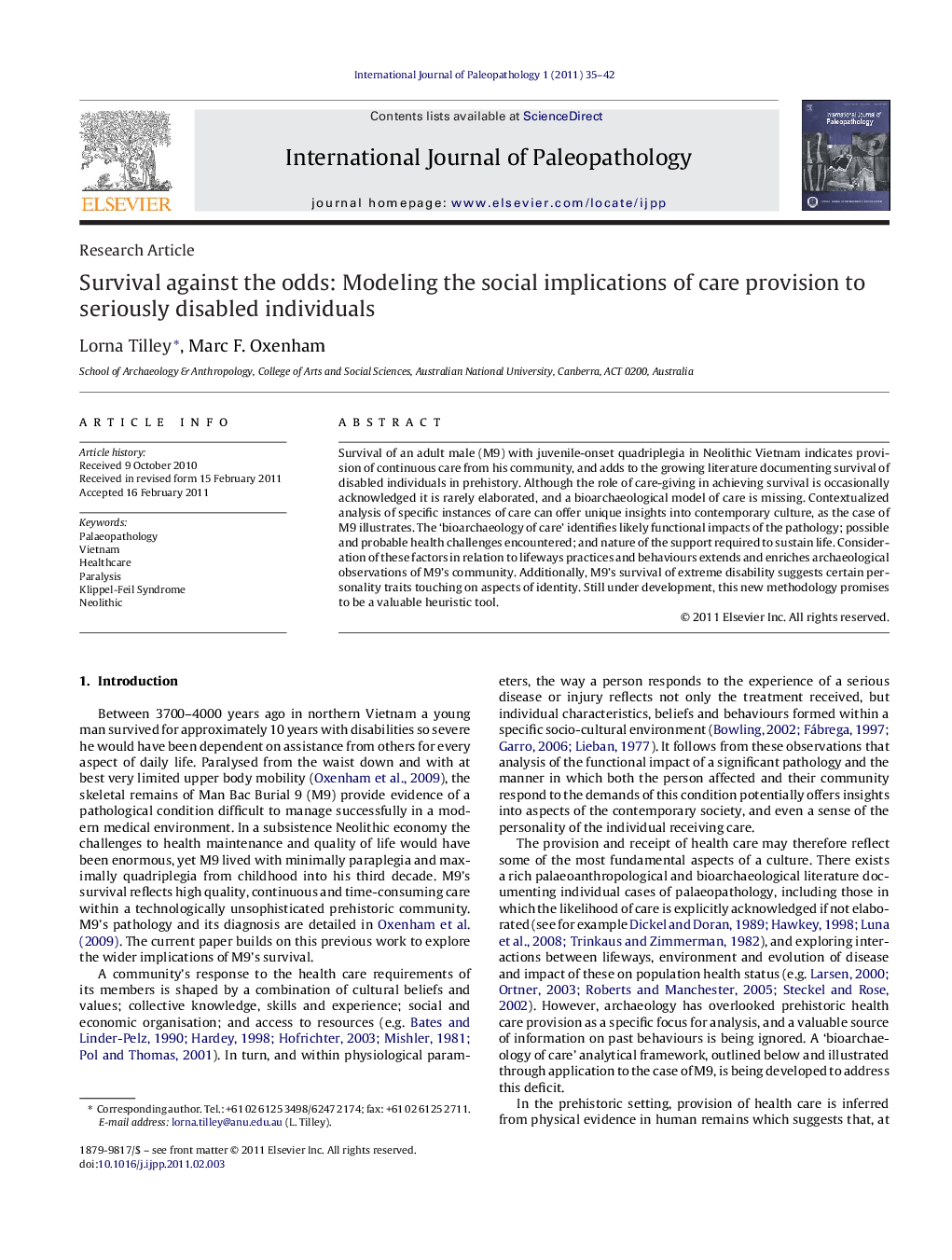| Article ID | Journal | Published Year | Pages | File Type |
|---|---|---|---|---|
| 101478 | International Journal of Paleopathology | 2011 | 8 Pages |
Survival of an adult male (M9) with juvenile-onset quadriplegia in Neolithic Vietnam indicates provision of continuous care from his community, and adds to the growing literature documenting survival of disabled individuals in prehistory. Although the role of care-giving in achieving survival is occasionally acknowledged it is rarely elaborated, and a bioarchaeological model of care is missing. Contextualized analysis of specific instances of care can offer unique insights into contemporary culture, as the case of M9 illustrates. The ‘bioarchaeology of care’ identifies likely functional impacts of the pathology; possible and probable health challenges encountered; and nature of the support required to sustain life. Consideration of these factors in relation to lifeways practices and behaviours extends and enriches archaeological observations of M9's community. Additionally, M9's survival of extreme disability suggests certain personality traits touching on aspects of identity. Still under development, this new methodology promises to be a valuable heuristic tool.
